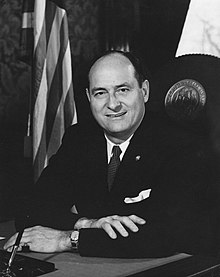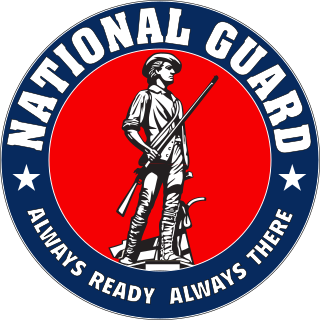
The National Guard is a state-based military force that becomes part of the U.S. military's reserve components of the U.S. Army and the U.S. Air Force when activated for federal missions. It is a military reserve force composed of National Guard military members or units of each state and the territories of Guam, the Virgin Islands, Puerto Rico National Guard, and the District of Columbia National Guard, for a total of 54 separate organizations. It is officially created under Congress's Article I, Section 8 enumerated power to "raise and support Armies". All members of the National Guard are also members of the organized militia of the United States as defined by 10 U.S.C. § 246. National Guard units are under the dual control of state governments and the federal government.

The Army National Guard (ARNG) is an organized militia force and a federal military reserve force of the United States Army. It is simultaneously part of two different organizations: the Militia of the United States, as well as the federal ARNG, as part of the National Guard as a whole. It is divided into subordinate units stationed in each state or insular area, responsible to their respective governors or other head-of-government.

In the United States, state defense forces (SDFs) are military units that operate under the sole authority of a state government. State defense forces are authorized by state and federal law and are under the command of the governor of each state.

The Ohio Military Reserve (OHMR) is one of three separate components that make up the Ohio State Defense Force (SDF). Like other SDF's the Ohio Military Reserve functions as a reserve to the Ohio National Guard.
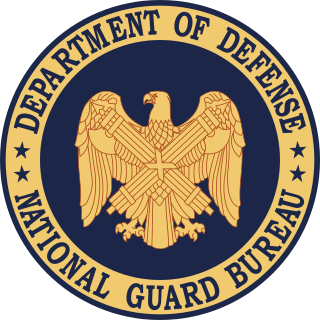
The National Guard Bureau is the federal agency responsible for the administration of the National Guard established by the United States Congress as a joint bureau of the Department of the Army and the Department of the Air Force. It was created by the Militia Act of 1903. The National Defense Authorization Act for Fiscal Year 2008, elevated the National Guard to a joint function of the Department of Defense. The 2007 NDAA, from the previous year, elevated the chief of the National Guard Bureau from a lieutenant general to a four-star general.

The New York Guard (NYG) is the State Defense Force (SDF) of New York State, and is one of the four branches of the New York Military Forces (NYMF). Originally called the New York State Militia, it can trace its lineage back to the American Revolution and the War of 1812.

The Virginia Defense Force (VDF) is the official state defense force of Virginia, one of the three components of Virginia's state military along with the Virginia National Guard which includes the Virginia Army National Guard, the Virginia Air National Guard, and the unorganized militia. As of 2023, the VDF has approximately 275 personnel. The VDF is the descendant of the Virginia State Guard, the Virginia Regiment, and ultimately the Colonial Virginia militia of the Virginia Colony.

The Georgia State Defense Force (GSDF) is Georgia's State Guard. The GSDF is a professionally trained volunteer component of the Georgia Department of Defense, serving in support of the national and state constitutions under direction of the governor and the adjutant general of Georgia. As a State Defense Force (SDF), the GSDF serves alongside the Georgia Army National Guard and the Georgia Air National Guard. The mission of the GSDF is to provide volunteers to assist government agencies and civil relief organizations during emergencies.

The militia of the United States, as defined by the U.S. Congress, has changed over time. During colonial America, all able-bodied men of a certain age range were members of the militia, depending on each colony's rule. Individual towns formed local independent militias for their own defense. The year before the U.S. Constitution was ratified, The Federalist Papers detailed the Founding Fathers' paramount vision of the militia in 1787. The new Constitution empowered Congress to "organize, arm, and discipline" this national military force, leaving significant control in the hands of each state government.
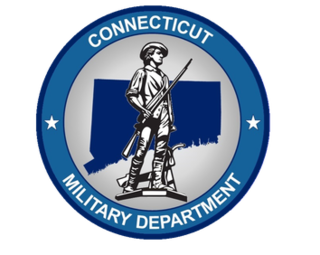
The Connecticut Military Department is a state agency of the government of Connecticut. Its primary components are the Connecticut Army National Guard, the Connecticut Air National Guard, and four companies of the state militia. The Military Department of the State of Connecticut traces its origins to May 11, 1637, when the "General Courts" established a military arm of the provincial government. In 1939, the State's Military Department was established to consolidate the offices of Adjutant General, Quartermaster General, Armory Board, and Armory Board Inspector.
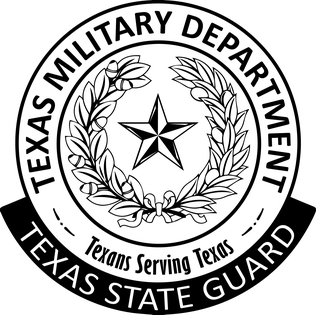
The Texas State Guard (TXSG) is part of the state military force of Texas, and one of three branches of the Texas Military Forces. Along with the other two branches, the TXSG falls under the command of the Governor of Texas and is administered by the Adjutant General of Texas, an appointee of the Governor. The other two branches of the Texas Military Forces are the Texas Army National Guard and the Texas Air National Guard.

The Indiana Guard Reserve (IGR), formerly the Liberty Guard and the Indiana Legion, is the state defense force of the state of Indiana. The Indiana Guard Reserve serves under the exclusive authority of the governor of the State of Indiana through his executive agent for military matters, The Adjutant General of Indiana. The Guard Reserve is a unique military organization designed to supplement the Indiana National Guard and to defend Indiana if any part of the Indiana National Guard is in active federal service. The Indiana Guard Reserve also provides MEMS qualified soldiers who can augment Indiana Homeland Security missions and County Emergency Operations activities.

The Massachusetts State Defense Force (MSDF) is the currently inactive state defense force of the Commonwealth of Massachusetts. It was inactivated in 2016 by Governor Charlie Baker. The purpose of the Massachusetts State Defense Force, when active, is to augment the Massachusetts National Guard during emergencies in the state, especially when some or all of the National Guard was deployed. The MSDF is an all-volunteer militia which reported to the State Adjutant General and was under the command of the Governor of Massachusetts. Members met for drills one weekend per month unless activated by the Governor during an emergency. The MSDF was headquartered at Milford, Massachusetts, in the same building as the Massachusetts National Guard. The director of the MSDF was appointed by the Adjutant General of Massachusetts (TAGMA). The Massachusetts State Defense Force is authorized by both the Constitution of Massachusetts and chapter 33 § 10 of the Massachusetts General Laws.

The Washington Air National Guard (WA ANG) is the aerial militia of the State of Washington, United States. It is a reserve of the United States Air Force and along with the Washington Army National Guard an element of the Washington National Guard and of the much larger United States National Guard Bureau.

The Puerto Rico State Guard is the state defense force of Puerto Rico that operates under the sole authority of the governor of Puerto Rico who, in turn, delegates such authority to the Puerto Rico Adjutant General. The Guard's secondary purpose is to assume the state mission of the Puerto Rico National Guard in the event that the National Guard is mobilized. The first incarnation of the PRSG was created in 1941 in response to World War II and it disbanded in 1946. The PRSG was revived in 1971 and has remained in continuous existence since then. It is one of the few state defense forces of the United States that has an air division.
The history of the United States Army began in 1775. The Army's main responsibility has been in fighting land battles and military occupation. The Corps of Engineers also has a major role in controlling rivers inside the United States. The Continental Army was founded in response to a need for professional soldiers in the American Revolutionary War to fight the invading British Army. Until the 1940s, the Army was relatively small in peacetime. In 1947, the Air Force became completely independent of the Army Air Forces. The Army was under the control of the War Department until 1947, and since then the Defense Department. The U.S. Army fought the Indian Wars of the 1790s, the War of 1812 (1812–15), Mexican–American War (1846–48), American Civil War (1861–65), American Indian Wars, Spanish–American War (1898), World War I (1917–18), World War II (1941–45), Korean War (1950–53) and Vietnam War (1965–71). Following the Cold War's end in 1991, Army has focused primarily on Western Asia, and also took part in the 1991 Gulf War and war in Iraq, and the war in Afghanistan.
The reserve components of the United States Armed Forces are military organizations whose members generally perform a minimum of 39 days of military duty per year and who augment the active duty military when necessary. The reserve components are also referred to collectively as the National Guard and Reserve.

The Tennessee State Guard (TNSG) is the state defense force of the state of Tennessee. The TNSG is organized as a military reserve force whose members drill once per month unless called to active duty. The TNSG is a branch of the Tennessee Military Department, alongside the Tennessee Army National Guard, the Tennessee Air National Guard, and the Tennessee Emergency Management Agency. The State Guard acts as a force multiplier for the state's National Guard. As a state defense force, the Tennessee State Guard cannot be federalized, and is not deployed outside the borders of Tennessee, as it is a purely state-level unit. It answers solely to the Governor of Tennessee, unlike the dual federal and state controlled National Guard. The creation of a state military force is recognized under Tennessee Code Annotated 58-1-401.

The Pennsylvania State Guard is the currently inactive official state defense force of the state of Pennsylvania, which was active during World War II and the Korean War. The unit was organized as a home guard composed of volunteers who were trained and organized as parallel to the state's National Guard. As a part of Pennsylvania's official militia, the Pennsylvania State Guard was trained, organized, and funded by the state of Pennsylvania, answered to the governor, and could not be federalized or deployed abroad.
The New Jersey State Guard, previously known as the New Jersey State Militia, is the inactive state defense force of New Jersey, and is one of New Jersey's authorized military forces. The State Guard served as the stateside replacement for the New Jersey National Guard during World War I and World War II when the National Guard was deployed abroad.




